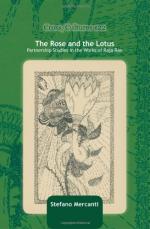|
This section contains 956 words (approx. 4 pages at 300 words per page) |

|
In The Cat and Shakespeare (1965) the larger natural symbols of The Serpent and the Rope (1960) have been adapted for a deeper and more intensive examination of Truth, now sought in the familiar domestic details of the ordinary workaday life—houses, walls, cats, coffee, illness, and so on. These are the dominant symbols of the novel, which recur page after page. The wall defines a threshold between the physical and supraphysical worlds; the bilva-tree hangs over the wall, thereby sanctifying it through contiguity (as in the legend of the hunter explained at the beginning of the novel); the house of three storeys encompasses the three worlds, heaven, earth, and the underworld (according to one traditional interpretation of Hindu cosmology); the ration shop becomes a symbol of all mundane activity governed by clock time, while the cat stands for the fundamental regenerative and sustaining principle known variously as Brahman...
|
This section contains 956 words (approx. 4 pages at 300 words per page) |

|


